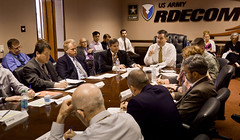Riel and Polin’s article ‘Online Learning Communities’ is based around the premise that learning is a social activity and is at the heart of online learning communities – an idea that already holds quite a bit of ground in the educatoin field, as Anne (another NGL course participant) has already discussed.
The article goes on to explore three different types of learning communities – task based, practice based, and knowledge based – which exist together in a learning organisation. Each of these can be supported through technological systems to deliver benefits for both teachers and students, e.g.
• Through supporting interactions via online tools
• By introducing students to professional communities and enabling them to be part of a team
• Through providing students with opportunities to experience handling tools for inquiry
• Helping students to be familiar with and build skills with working in online communities and observe other (expert practitioners) in the field
• Providing practical and expert support networks for teachers
As a student
While reading the paper, I could see examples of each of these communities in the NGL course –
Task-based – the way in which the fellow NGL students are sharing and reviewing blogs to meet the assessment requirements of this uni course
Practice-based – through the links we share and discussions on our blogs about literature in the field of Networked and Global learning. By doing so we building our knowledge as practicioners in the education field.
Knowledge-based – through posting online and recording articles in Diigo and linking to each others’ blogs. We are creating an online repository of information on NGL!
As a teacher
In my role as a teacher I can see value in drawing on each of these three types of communities – task, practice and knowledge based – to support learning in my organisation.
So far I have had some preliminary discussions with staff members and senior management about what sort of learning activities we will need to implement to achieve our aims of transitioning staff to new practices in the coming months. In these discussions we have tossed around the idea of setting up an internal collaborative website for our staff (the students) where we could provide information and training modules for the new practices we are going to implement. On the site staff can read and discuss the modules or new procedures with their peers, and ask each other questions to assist with the change (task-based learning). We were also looking at setting up a ‘library’ section of the collaborative site, where we could keep records of key information about our area of work that staff could draw from into the future (knowledge- based). It was also hoped that the staff would use the collaborative site to upload articles or news about new changes or ideas in the field or to provide mentoring to fellow staff in both the short and long term, to support existing and future staff to improve their practice (practice-based).
Reference
Riel, M., & Polin, L. (2004). Online learning communities: Common ground and critical differences in designing technical environments. In S. A. Barab, R. Kling, & J. Gray (Eds.), Designing for Virtual Communities in the Service of Learning (pp. 16–50). Cambridge: Cambridge University Press.







